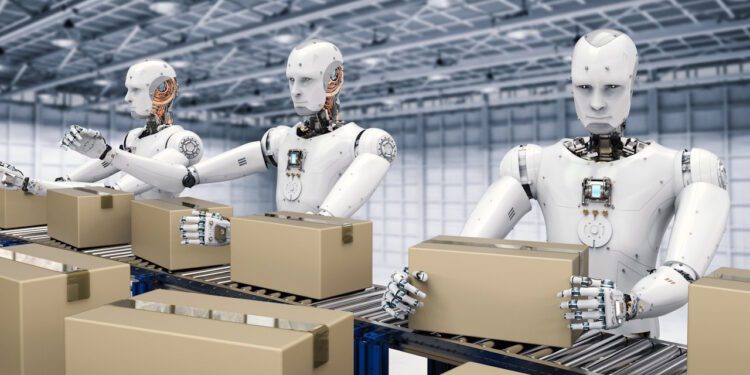As technology increases, how will it affect manual labor?
Even a few short years ago, it sounded like the stuff of science fiction, but there’s no doubt that automation is here to stay and will become an increasingly prevalent part of our lives; from kitchens, to transport, to delivery, technology is replacing jobs formerly occupied by people. But is this a positive or negative thing overall… and can it be both?
According to the World Economic Forum’s Future of Jobs Report for 2023, both humanoid and non-humanoid artificial workers are set to replace their human counterparts in more and more areas, with that comes a reduction in full employment and worker displacement. There are multiple areas susceptible to being replaced by AI, but the areas that are currently seeing the most growth in non-human workers are energy tech, electronics, and consumer goods.
For consumer goods, the loss of human labor may be as much as 60%. But at the same time, IT companies are expecting to create an equal percentage of jobs for the manufacture, delivery, and ongoing servicing of robot workers in the next five years, so it could end up canceling each other out with regards to a win-loss scenario.
Zipline, a San Francisco-based company that produces unmanned delivery drones is seeking up to 100 additional workers to build them. These unmanned drones currently have been contracted for use by around 4,000 hospitals across the U.S.; major employers such as Walmart, GNC, and Toyota; and even the government of Rwanda. The open positions for additional workers are ranging in scope from electrical and mechanical engineering to coding and security.
The increasing use of automation does have its advantages in that it reduces the need for human workers to complete certain monotonous, routine tasks and to increase productivity as a result. It can also plug holes in the labor shortage.
Businesses are now faced with striking a fine-tuned balance between the cost-effectiveness of automated workers and their human counterparts. It can make the company’s life easier but could also set them on a collision course with unions and labor advocates.
China, where such concerns are not so prevalent as in America, are already leading the world in automated workforces, ramping up both the production and deployment of such tech in recent years.
While it’s true that automated worker technology is helping to solve certain labor shortages and making companies more productive, nonetheless its growth has been stymied by – somewhat ironically – a shortage in workers to build them. Companies are resorting to hiring new employees straight out of high school, bypassing the usual post-graduate route, such is the demand for labor in this area.
How this will impact traditional employment and hiring practices is certainly an unknown road at this point, but there’s no doubt that a corner has been turned and the ‘future tech’ we used to read about in sci-fi literature or in movies is with us right here and now…


